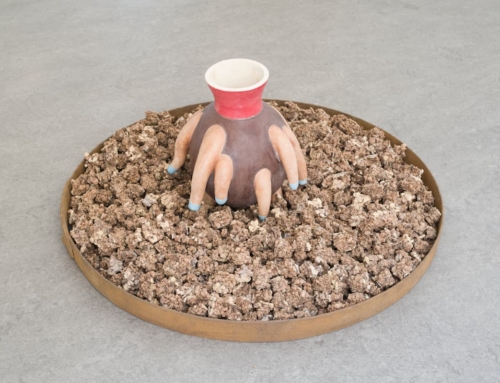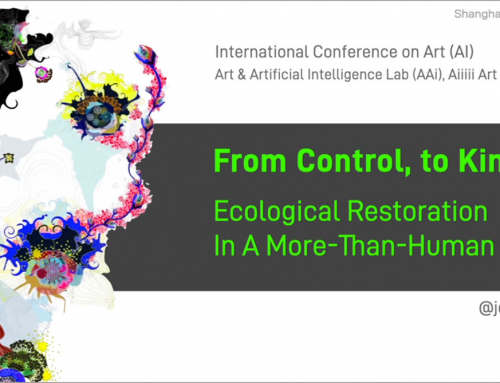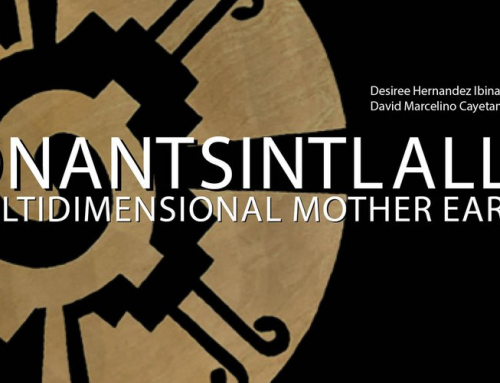At the invitation of Paola Anotonelli, one of the world leading design curators and an eminence at at MoMA in New York, I spent a most enjoyable year talking with her, Aura Oslapas (from Stone Yamashita), Bruce Mau, and Larry Keeley, about the future of work and what that future portended for design. Paola’s show was an enormous smash hit. – but I was disappointed how little of our ‘beyond the object’ thinking made into the exhibition.
Are museums a menace?
I have long thought most of them to be harmless, but boring; good places for tourists to escape from the rain, and for art persons to escape from the present. But, having recently attended the opening of Workspheres at MoMA in New York, I wonder now if I have been too complacent.
Paola Antonelli’s show is a smash hit – “off the charts” in the words of Chee Pearlman, a very Solomon (or should it be Solomona?) of what’s in, and hot, in the US-of-A. There were more people at the press opening than attend most public openings of big art shows; the private view proper, that evening, was simply packed; a heaving, black-clad throng containing everyone who is anyone in architecture and design. The next day Herbert Muschamp, the arch but hugely influential architecture critic of the New York Times, said Antonelli’s show “falls just short of greatness; modernity is back at the Modern, and Ms Antonelli’s got it.”
If this is the new modernity, then I’m worried. I should explain that I was involved in the development of Workspheres as one of Paola’s Antonelli’s advisers. I admire her enormously as one of the great curators of our time, otherwise I would not have been seduced into taking part. So this piece is as much a self-criticism as anything. But I believe that this smash–hit show tells more or less the opposite story about the future design of work, to the one we developed during the planning phase for much of 2000. Paola, our host, was sympathetic to the storyline we collectively developed during that year – indeed, she led the way in looking for fresh and insightful angles. Between those discussions, and the show itself, the storyline was turned upside down by the museum, and by the way it works.
MALE SEXUAL INSECURITY (AGAIN)
Workspheres is a glittering collection of products for the workplace of the future; but it is all about tools. It says next to nothing about the content of the work we will do, and how we will do it. The show pushes design firmly back into the ghetto of pointless and narcissistic object-making from which thoughtful designers have been trying desperately to escape.
The show is full of objects for isolated and inward-gazing individuals. Many of these objects are harmless, if banal: Hella Jongerius’ fur-covered bed, which appealed to the man at the Times, springs to mind. Others exhibits are downright insulting: the ponderous, gas-guzzling, permafrost-destroying Maxi-Mog Global Expedition Vehicle, by Bran Ferren and Thomas Ritter, would be a brilliant parody about the reification of male sexual insecurity; if it were not for real. Needless to say, it’s the hit of the show.
The Workspheres catalogue is a metaphor of the twisted values of the museum system. The front section contains a series of essays (one of them is by me) about the changing nature of work; its collaborative nature, its paradoxical relationship with time, its attempt to engage with the incredibly complex world we have made. Then come the ‘plates’; 140 pages of desks and chairs and mobile phones and accessories and gadgets. Hardly any people. No groups. No mess. No conflict. No fear. No confusion. No love.
At the end of the book, six specially commissioned projects are presented. Some of these are pretty interesting: Marti Guixe’s surreal but insightful ‘Hi Bye’ mood-altering food system; Ideo Japan’s ‘personal skies’ installation; John Maeda’s time-mapping machine; LOT/EK’s Inspiro-Trainer. But, although these special commissions look beyond the object in workspace design, they are lost in the book; and in the show, where all you see is desks and chairs.
OBJECT-CENTRIC
Museums like MoMA are big, rich machines that produce, not understanding, nor meaning, but exhibitions and catalogues. They have hordes of staff to keep busy: researchers, people who buy things, conservators, cataloguers, display designers, and catalogue editors constantly on the scrounge for beautiful pictures of; objects. Museums are like little galaxies; vast open spaces that their hordes of servants have to fill up with; things. And always, hordes of people queueing up outside waiting to escape from reality and be entertained.
What museums do not have, as institutions, is the remotest interest in changing the way we understand design. This is why I conclude that museums are a menace. Workspheres is the biggest and most prominent design exhibition for years; and it has a great theme. But it takes us backwards. It reinforces an object-centric understanding of design that is hopelsssly outdated.
I was prompted to write this self-criticism by two experiences on my return from New York. My first was the opportunity to check out KLM’s new Operations Control Centre at Schiphol. I love this kind of thing: one hundred workstations face towards an enormous map of the world. For the people who work there, the map seems to function as a shared mental and physical space that enables them to co-ordinate an amazingly complex operation: KLM’s aircraft cover nearly a million km a day, and just one long-haul 747 needs to be stocked up with 5,000 kg of catering equipment. While important, the design of the desks and the chairs and space in this room, while important, are a thousand times less interesting than the design of the communication flows among the people who sit in it; and between them and their computers and the planes and support vehicles buzzing about all over the world.
THE NEMAWASHI FACTOR
The second experience that hit me after Workspheres was a minor problem in our office. Eight of us work in two connected rooms; we have a great team that works really well together. What did not work well was a relationship with a writer working from home a few miles away. He is an excellent writer – a typical high-tech, powerbook-toting, mobile-always-on nomad of the kind celebrated in Workspheres. And we, of course, are excellent clients. But somehow, things between us did not ‘click’. For all the phone calls and e-mails and briefing sessions, we did not build up any momentum of understanding during a six-month editorial project. And the reason? He was not there, with us, in the office. That’s all. And the best desks and mobile devices in the world would not have made the slightest difference.
Kayoko Ota, in one of the best of the introductory essays to the Worksheres catalogue, gave our strangely intractable local difficulty a name: nemawashi. Originally a horticultural word that means ‘to turn the roots’ prior to replanting; or, by implication, ‘laying the groundwork’; nemawashi has come to mean the process by which groups in Japan develop the shared understanding without which nothing much gets done. Workspheres; or, to be precise MoMA, the institution which created it; suffers from a nemawashi-deficit. They are fixated on things, and disconnected from the flows of people and ideas in the world from which we can really learn. Museums are probably unreformable, too. They are bad news for design.




